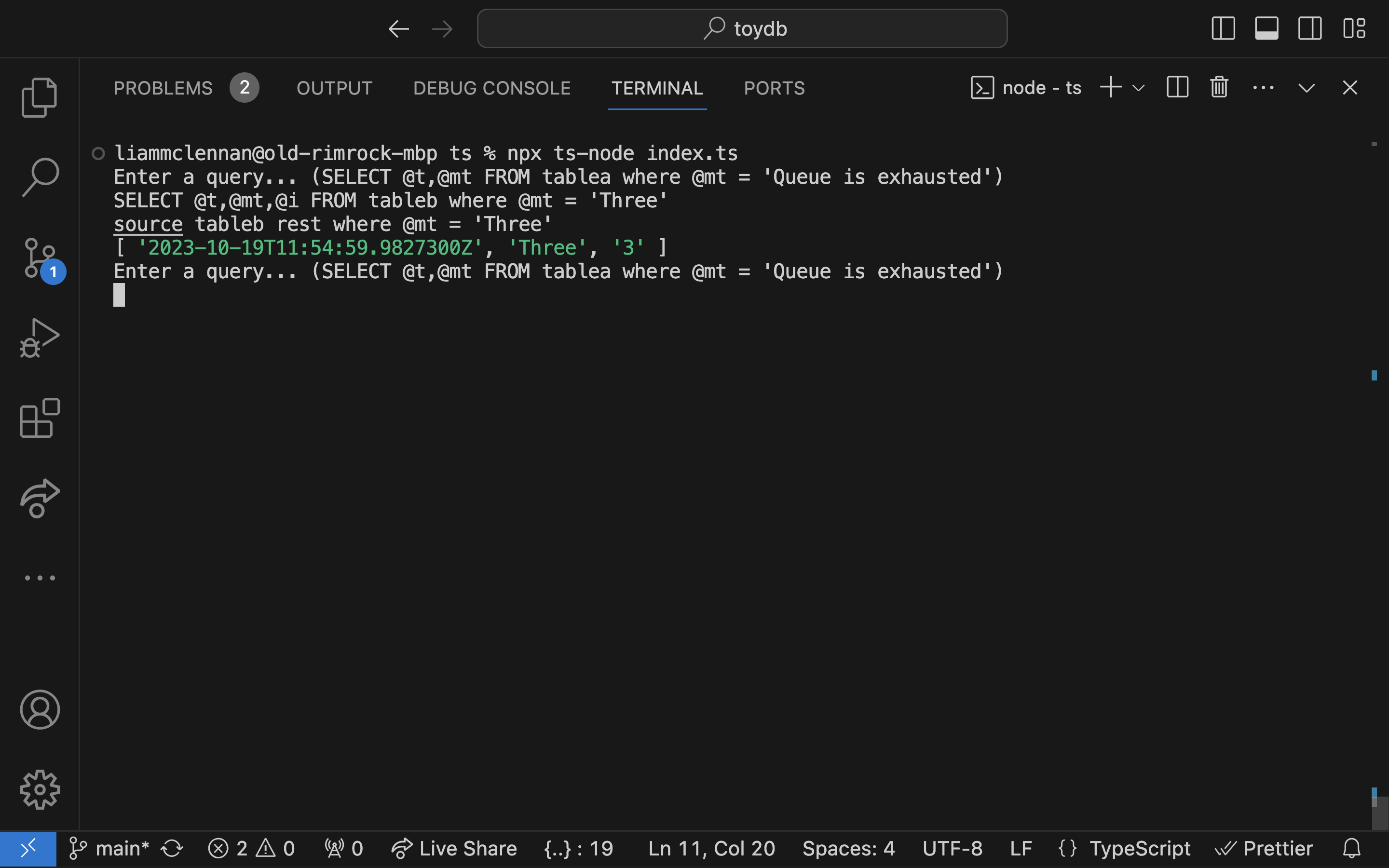At work, I contribute to a database called Flare.
Flare, and database technology in general, is fascinating and deeply rewarding, but it is also huge, complex and inscrutable :D
Because I think databases are interesting, and I hope others may too, I started building a new database, called Wormwood. Originally, I called it ToyDB, because it is a toy db, but there is already at least one of those so I changed the name to Wormwood.
Wormwood is being built in Typescript (because it is accessible) and Rust (because it will help me to learn Rust).
I hope to keep Wormwood very, very simple so that it may serve as a demonstration of the concepts that make more sophisticated databases possible. This quickly leads to decisions that prevent it from being a useable database, and that is ok. Wormwood will never be useful for anything other than the joy of finding things out.
If you’d like a quick introduction to the terrain you could do worse that Architecture of a Database System (Hellerstein, Stonebraker and Hamilton). It describes a core type used to build data pipelines that looks like this:
type Row = any[];
type RowMarker = "end of file";
interface Iter {
constructor(inputs: Iter[]): Iter;
next(): Promise<Row | RowMarker>;
}
Instances of this Iter type (or similar) are connected into a pipeline. When a value is required a consumer calls next() on the iterator at the top of the stack and it calls next() on down the stack until somewhere there is an Iter that reads tuples from disk. In Wormwood this Iter is called Producer (because it produces rows).
Producer
The disk format for Wormwood is CLEF (newline delimited JSON). It is easy to work with in JavaScript and it is familiar to me. CLEF looks like this:
{"@t":"2023-10-19T11:54:57.9827300Z","@mt":"One","@i":"1"}
{"@t":"2023-10-19T11:54:58.9827300Z","@mt":"Two","@i":"2"}
{"@t":"2023-10-19T11:54:59.9827300Z","@mt":"Three","@i":"3"}
{"@t":"2023-10-19T11:55:00.9827300Z","@mt":"Four","@i":"4"}
{"@t":"2023-10-19T11:55:01.9827300Z","@mt":"Five","@i":"5"}
{"@t":"2023-10-19T11:55:02.9827300Z","@mt":"Six","@i":"6"}
The job of the producer is:
- to stream tuples from a CLEF file. The file could be gigabytes so it is important not to rely on reading the entire file into memory.
- to extract properties from the CLEF objects. If a query requires the
@mtand@iproperties then we only want to take those. - to convert a JSON object into a tuple row format. In Typescript this is the
type Row = any[]type that thenext()function returns. - to convert node.js’s push based streams into the
Iters pull model, by opening a stream, pushing data into a buffer, and lettingnext()pull from the buffer. This is whynext()is asynchronous - if the buffer is empty the producer needs time to read another chunk from disk.
Here is the Producer constructor:
constructor(table: string, columns: string[]) {
this.filePath = Path.join(__dirname, "../../data", `${table}.clef`);
this.columns = columns;
this.open();
}
‘Tables’ map to files in the /data directory - so select a, b from table1 will open the file /data/table1.clef. The open() method opens the file and starts streaming chunks into the buffer and is an abomination that I won’t soil your eyes with.
Producers next() method tries to grab a row from the buffer, and then feeds it through the makeRow function below to convert it into an array of the requested properties:
makeRow(line: string): any[] {
const parsed = JSON.parse(line);
return this.columns.map((c) => parsed[c]);
}
That is the state of the Producer iterator at the moment. The typescript implementation is hideous and will hopefully get cleaned up. The Rust version is gorgeous.
Here’s me running a query:
